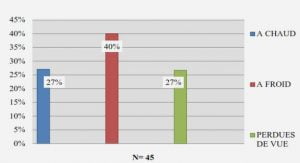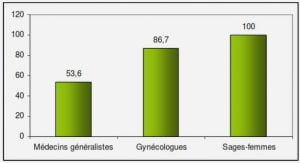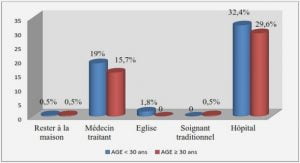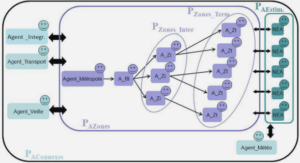Ethylene induced oil palm fruit shedding experimental system
Cell Wall, Pectin and Cell Separation
Plant cells are surrounded by cell walls composed of structural proteins and complex polysaccharides including cellulose, hemicelluloses, and pectin. The cell wall is a dynamic structure that undergoes modifications during development and its composition depends on the tissue, developmental stage and relates to its functional specificity (Knox 2008). Indeed, the cell wall not only functions as a structure and protective layer against pathogenic attack, but also plays a central role in plant development and response to environmental changes. For example, the cell wall contributes to a plant cell’s rigidity and strength, however, in order for a plant to develop, the cell wall must undergo modifications to allow cell expansion and elongation (Cosgrove 2005). Furthermore, separation between adjacent cells is an essential part of developmental processes that occur throughout the life cycle of the plant (Figure 1.1) (Roberts et al. 2002; Driouich et al. 2007; Chervin et al. 2008). Despite the importance of cell separation in plants, our knowledge about the cell wall structural dynamics and molecular mechanisms that underlie the spatial and temporal precision of cell separation in different species, plant tissues and developmental contexts remains limited. Pectin is the most structurally complex family of cell wall polysaccharides and is also a major component of primary walls of both monocots and dicots (Mohnen 2008). Pectic polysaccharides have roles in plant growth and development, provide mechanical strength and physical properties of primary walls, are involved in intercellular signalling that controls plant morphogenesis and plant defence against pathogens (Mohnen 2008; Caffall and Mohnen 2009). Pectin is abundantly found in walls of expanding and dividing cells, walls of cells in the soft parts of the plant, and most abundantly in the middle lamella and cell corners.
In addition, pectin as the cement between two adjacent cells is of paramount importance for cell adhesion and during cell separation (Jarvis et al. 2003). Not only does it form the matrix in which the cellulose microfibers of the primary cell wall are embedded, but also is the main component of the middle lamella that adjoins adjacent cells (Figure 1.4) (Willats et al. 2001a; O’Neill et al. 2004). The structural characteristics and the role of how pectin participates towards cell separation to occur in a temporally and spatially precise manner are not completely understood despite a central importance during plant vegetative and reproductive development.
|
Table des matières
1. Chapter 1. Introduction
1.1 Organ Abscission
1.2 Cell Wall, Pectin and Cell Separation
1.3 Oil Palm Fruit Abscission
1.4 Objectives of the Thesis
2. Chapter 2. Temporal and Spatial Expression of Polygalacturonase Gene Family Members Reveals Complex Regulation During Fleshy Fruit Ripening and Abscission of the Monocot Oil Palm*
2.1 Introduction
2.2 Results
2.2.1 Ethylene induced oil palm fruit shedding experimental system
2.2.2 Polygalacturonase gene family expression in the oil palm fruit tissues and the identification of the EgPG4 transcript induced in the abscission zone prior to fruit shedding
2.2.3 In situ analysis of the spatial and temporal expression of EgPG4 during ethylene induced fruit shedding
2.2.4 Phylogenetic analysis of EgPG4 with relation to polygalacturonases with known functions
2.3 Discussion
2.3.1 The sequence and expression analysis of EgPG4 suggest functional conservation and divergence between monocots and eudicots
2.3.2 The sequence and expression of EgPG4 suggest functional divergence between dry and fleshy fruit
2.3.3 The high expression and induction of EgPG4 by ethylene suggests functions during both fruit ripening and abscission
2.4 Materials and Methods
2.4.1 Plant material, ethylene treatment and RNA extraction
2.4.2 Identification of oil palm non-redundant polygalacturonase nucleotide sequences from fruit
2.4.3 Quantitative Real-Time RT-PCR
2.4.4 Phylogenetic Analysis
2.4.5 RNA in situ hybridization
2.5 Appendix
3. Chapter 3. Abscission Zone Development and Acquisition of Competence for Cell Separation Functions and Response to Ethylene
3.1 Introduction
3.2 Results
3.2.1 Cellular studies of the oil palm fruit abscission zone
3.2.1.1 Cellular characteristics of the primary abscission zone of ripe fruit
3.2.1.2 Ontogenesis and cellular characteristic evolution of primary AZ during fruit development
3.2.1.3 Cellular characteristics of primary AZ during and after cell separation
3.2.2 Ultrastructure of oil palm fruit abscission zone during development analysis
3.2.3 Alterations to methylated homogalacturonan and xylogalacturonan in the oil palm fruit abscission zone
3.2.3.1 Immunolocalization of the main pectin epitopes during abscission zone ontogenesis and after cell separation
3.2.3.2 Pectin biochemical modification mapping by immunolocalizaton after fruit shedding induced by ethylene
3.3 Discussion
3.3.1 General cellular characteristics of oil palm fruit abscission zone
3.3.2 Pectin fluctuation during developmental stages
3.3.3 Pectin fluctuation after cell separation
3.4 Materials and Methods
3.4.1 Plant Materials
3.4.2 Oil palm fruit collection and ethylene treatment
3.4.3 Classical histology sample preparation
3.4.4 Scanning electron microscopy sample preparation
3.4.5 Immunohistochemistry sample preparation
3.5 Appendix
4. Chapter 4. Conclusion and Future Prospects
![]() Télécharger le rapport complet
Télécharger le rapport complet




